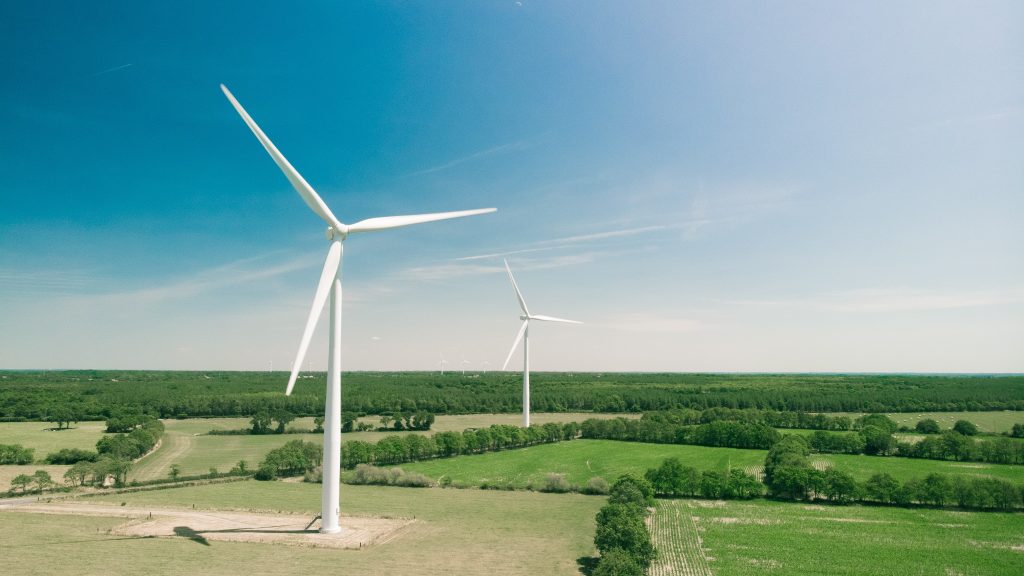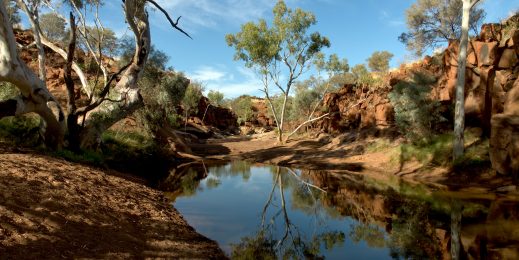
“There is rapid progress”: Dr Alan Finkel on Australia’s journey to net zero
By Brett Shoemaker, Sustainability Director, Microsoft ANZ
As I have written about already, Microsoft ANZ recently published a pioneering report on how Australia is tracking on its journey to achieve net zero emissions by 2050.
The report, Accelerating the journey to net zero: A blueprint for Australia, demonstrates that business-led innovation will be key to Australia achieving its sustainability goals. Yet it also reveals how much of this private sector innovation will depend on government support.
From funding to collaboration, business–government alignment will be a deciding factor in Australia’s sustainability success. The decisions and actions of the Australian Government are crucial in ensuring that organisations across Australia are informed, supported and empowered as the nation moves towards net zero.
As part of our research for the report, I had the opportunity to speak with Dr Alan Finkel, Special Adviser to the Australian Government on Low Emissions Technology. In this edited transcript of our conversation, Alan shares his thoughts on everything from divestment to domestic politics, and explains why he feels optimistic about the future of sustainability-focused innovation in Australia.
Alan, what do you think is causing the problems Australia is facing on the climate change front?
Let me start by saying that I think Australia is doing a lot that’s right. It’s just that the rest of the world doesn’t recognise that.

It’s difficult to do what you want to do when you face the realities of changing jobs, growing economies and putting the security and reliability of the electricity network at risk. But despite all that, Australia really has quite a good record. Our emissions are down 20 per cent on our 2005 baseline. Our 2030 commitment is for a 26 per cent reduction, but the predictions are that we’ll get to at least 35 per cent by 2030.
We have a strategic plan in place across a number of areas. As Special Advisor to the Australian Government on Low Emissions Technology, I chair the Low Emissions Technology Roadmap. This has been a multi-year process, identifying new priorities and updating the roadmap every year.
We are investing in clean hydrogen with a target to get it to $2 per kilogram by 2030. Another goal is to get solar electricity down to $15 per megawatt-hour at the production plant by 2030. We’re also looking at long-duration storage.
We’ve got a priority on zero-emissions steel from mine site to production, zero-emissions aluminium from mine site to production, and carbon capture and storage for less than $20 per ton.
We also have an Australian Government newly committed to supporting the electric vehicle industry, specifically through investing in recharging and refuelling infrastructure.
We have a leading position in managing a variable renewable electricity grid. Solar and wind are more difficult to manage from an electrical point of view, although they have become economically viable.
South Australia has the world’s highest penetration of solar and wind combined. There were six days in a row in December 2021 in which South Australia had 100 per cent of its electricity produced from solar and wind. Tasmania runs on 100 per cent renewable energy, efficiently combining wind electricity with hydroelectricity.
Across Australia, we have the world’s highest installed solar capacity and generation per capita, per year.
This being said, the operating system has to get better and better. We’re in a consortium with other leaders in this area, like the California ISO (Independent System Operator), the Irish ISO and New York ISO. There is definitely some really good work happening here.
How do you manage the balance between the value provided by carbon-intensive industries and the imperative to reduce emissions?
What do we use fossil fuels for in Australia? Primarily transport and electricity generation. We still get a lot of our electricity from coal, but that is declining more rapidly that people realise. We haven’t built a coal-fired generator since 2009 and some of the existing ones are closing earlier than originally anticipated. We haven’t built a gas-fired generator since 2016.
There’s no doubt that fossil fuels are on their way out. The best thing to do is to work with coal-buying nations like India, as we are doing in our bilateral partnership, to invest in technology development for solar, wind, electrolysis and batteries. The goal should be for zero emissions technologies to be sufficiently price competitive and reliable that they will make fossil fuels obsolete.

What progress do you see in Australia’s domestic and international politics that show promise on the journey towards net zero?
We recognise that we can’t do everything by ourselves. To this end, the Australian Government committed nearly $600 million in May last year to a low-emissions technology bilateral partnerships fund. It supports partnerships that were agreed in the following twelve months with Germany, Japan, Singapore, Korea, the United Kingdom and India.
We also work internationally through multilateral international partnerships such as Mission Innovation and the International Partnership for the Hydrogen Economy (IPHE) on regulatory standards, certification schemes and the articulation of ambition.
Domestic politics have played a part in why the transition towards clean energy has been difficult and slow. But there is more focus now than ever before. The state and territory governments are all committed to net zero by 2050, as is the federal government.
The Low Emissions Technology Roadmap is an enduring process that is updated every year to incorporate increased ambition and adapt to changing technological opportunity.
For example, in last year’s update we added ultra-low-cost solar as a new priority, and we introduced electric vehicle charging and digitalisation of the electricity network as prioritised enabling infrastructure.
The government also committed to a billion-dollar clean tech venture capital fund. And on top of that, we’ve got the world-class Emissions Reduction Fund that supports emissions reduction and negative emissions projects, and provides credibility to carbon offsets trading.
The Australian Meat and Livestock Association, which represents the most difficult-to-abate sector in the world, is committed to zero emissions by 2030. The National Farmers Federation is committed to net zero emissions by 2050. When I did the National Electricity Market review in 2017, we recommended a process of emissions intensity reduction in a methodical fashion. We had 49 out of 50 recommendations accepted, but not the emission reduction recommendation. But if you are both patient and ambition, there is progress. Three months ago, the government adopted a net zero by 2050 commitment.
There is rapid progress in Australia, but it will take two or three years before the world recognises the improvements.










